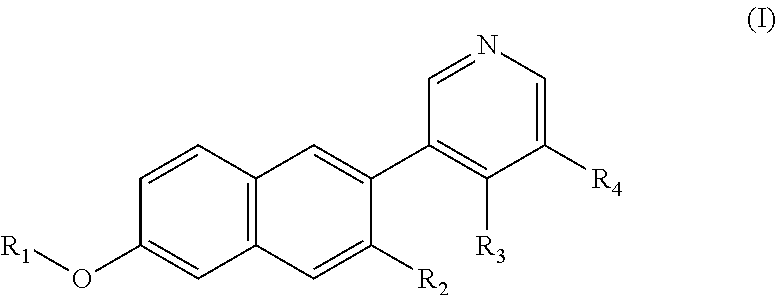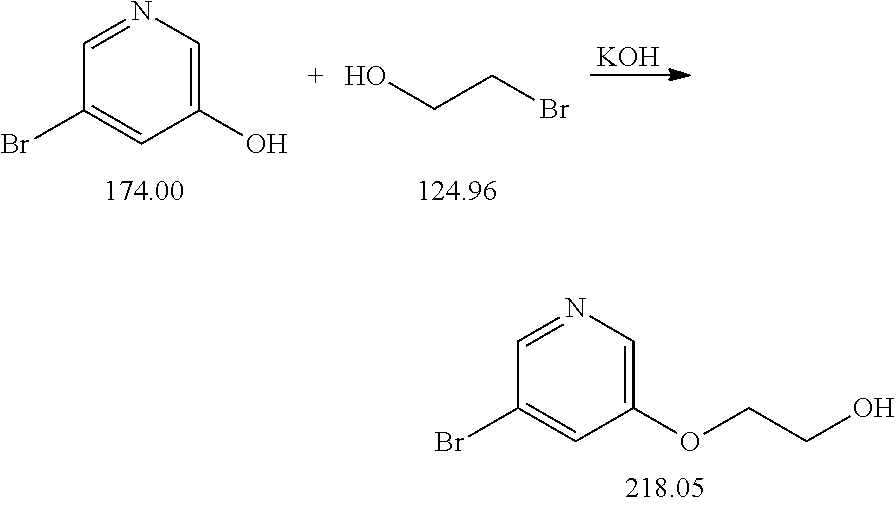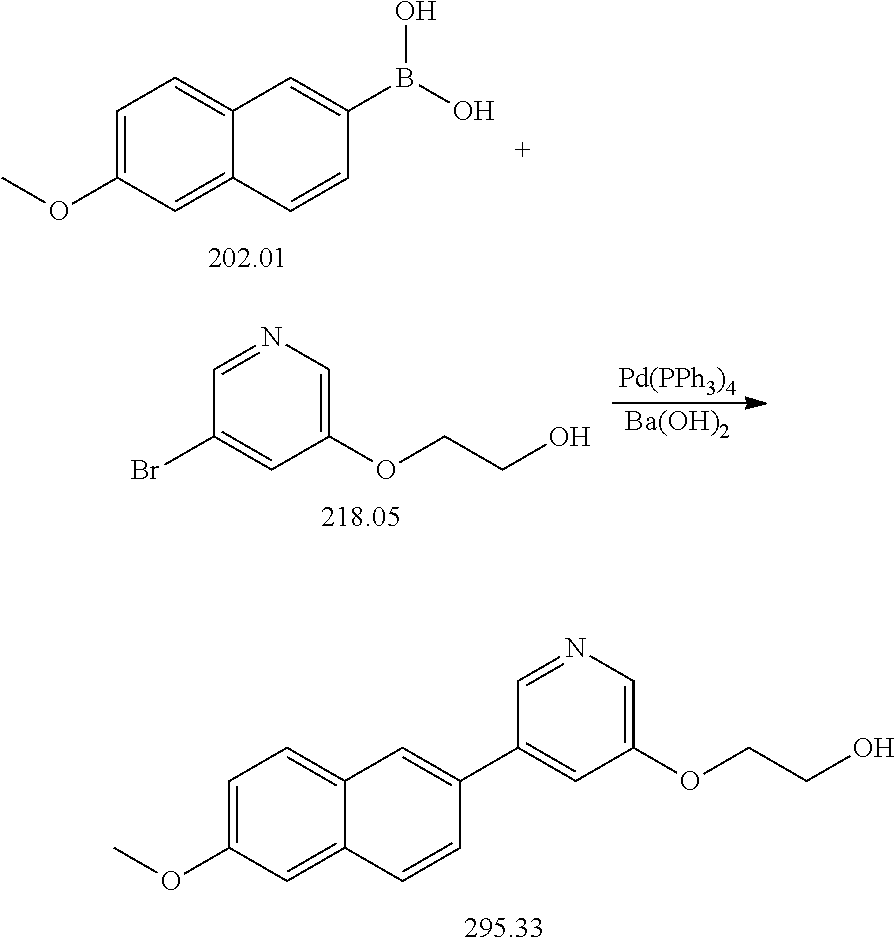Pet radiopharmaceuticals for differential diagnosis between bilateral and unilateral conditions of primary hyperaldosteronism
- Summary
- Abstract
- Description
- Claims
- Application Information
AI Technical Summary
Benefits of technology
Problems solved by technology
Method used
Image
Examples
synthesis example 1
Step 1: Synthesis of 3-bromo-5-(2-hydroxyethoxy)pyridine
[0025]
[0026]To a solution of 2.0 g (11.5 mmol) 3-bromo-5-hydroxypyridine (glassware evacuated) and 1.0 mL (1.75 g, 14 mmol) 2-bromoethanol in 10 mL DMF was added a solution of 920 mg (13.9 mmol) potassium hydroxide and 63 mg (0.37 mmol) potassium iodide in 2 mL water, and the mixture was heated at 85° C. for 4 h. After cooling to room temperature the mixture was filtered, and the filtrate was diluted with 70 mL water and 70 mL diethyl ether. The organic phase was separated and washed with 20 mL 2% aqueous KOH solution. After stripping the solvent, the crude product was obtained as a light-colored solid (melting point: 53-55° C.).
[0027]Yield: 339 mg (1.55 mmol, 13.5%)
[0028]Thin-Layer Chromatography (Silica Gel):
[0029]Rf 3-bromo-5-hydroxypyridine (CH2Cl2)=0.05
[0030]Rf 3-bromo-5-(2-hydroxyethoxy)pyridine (CH2Cl2)=0.05
[0031]1H-NMR (CDCl3): δ=8.30 (d, 1H), 8.25 (d, 1H), 7.40 (t, 1H), 4.15 (m, 2H), 4.00 (m, 2H...
synthesis example 2
Step 1: 2-Bromo-6-(2-fluoroethoxy)naphthalene
[0050]
[0051]A solution of 2.37 g (10.6 mmol) 2-Bromo-6-naphthol, 3.42 g (24.4 mmol) K2CO3 and 4.16 g (19.1 mmol) 2-Fluoroethyltosylate in 25 mL DMF was heated overnight at 60° C. The solution was poured into 300 mL water and extracted with chloroform (3×100 mL). The organic phases were washed with 100 mL 1 N NaOH and 100 ml water and dried over Na2SO4. After stripping the solvent the crude product was purified by column chromatography (Hexane / EtOAc 80 / 20).
[0052]Appearance: Yellow solid
[0053]Melting point: 83-85° C.
[0054]Yield: 2.70 g (10.0 mmol, 94.3%)
Thin-Layer Chromatography (Silica Gel):
[0055]Rf 2-Bromo-6-naphthol (Hexane / EtOAc 80 / 20)=0.45
[0056]Rf 2-Bromo-6-(2-fluoroethoxy)naphthalene (Hexane / EtOAc 80 / 20)=0.65
[0057]1H-NMR (CDCl3): δ=7.80-7.10 (m, 6H), 4.90 (t, 1H), 4.75 (t, 1H), 4.30 (t, 1H), 7.15 (t, 1H).
Step 2: 2-(2-Fluoroethoxy)naphthalene-6-boronic acid
[0058]
[0059]A solution of 3.5 mL (2.84 g, 15.1 mmol) Bor...
PUM
| Property | Measurement | Unit |
|---|---|---|
| Temperature | aaaaa | aaaaa |
| Temperature | aaaaa | aaaaa |
| Capacitance | aaaaa | aaaaa |
Abstract
Description
Claims
Application Information
 Login to View More
Login to View More - R&D
- Intellectual Property
- Life Sciences
- Materials
- Tech Scout
- Unparalleled Data Quality
- Higher Quality Content
- 60% Fewer Hallucinations
Browse by: Latest US Patents, China's latest patents, Technical Efficacy Thesaurus, Application Domain, Technology Topic, Popular Technical Reports.
© 2025 PatSnap. All rights reserved.Legal|Privacy policy|Modern Slavery Act Transparency Statement|Sitemap|About US| Contact US: help@patsnap.com



